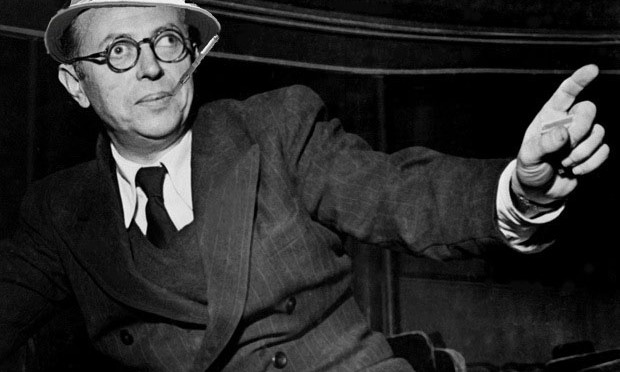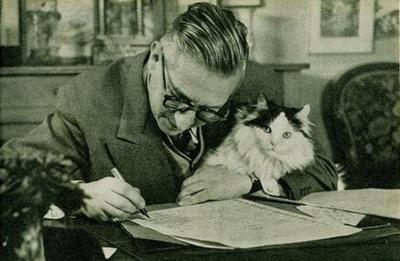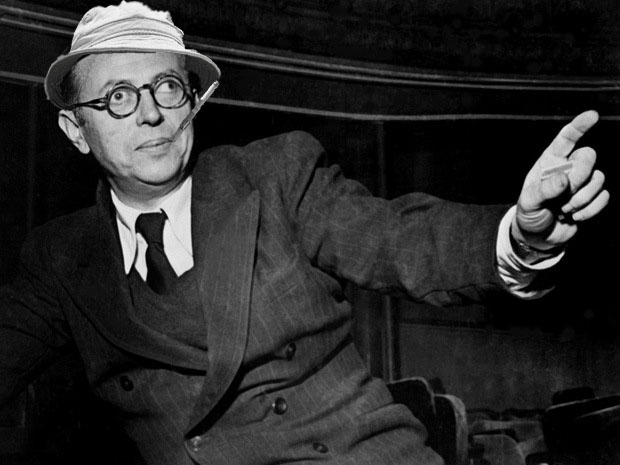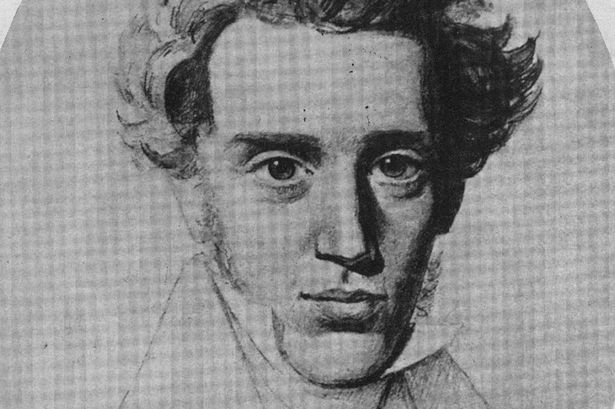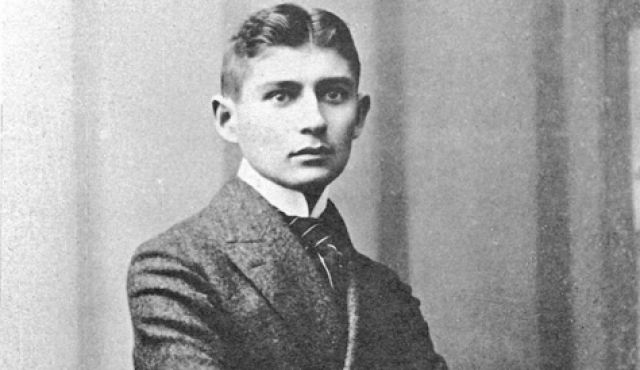Existentialism is a field of philosophy that grapples with human existence and flourished in post-war Europe in the 1940s and 1950s.
Of course, these thinkers of human existence were also dealing with their own. Namely, that their lives were a bizarre shit-storm of mental breakdowns, drug-induced genius and tremendous backlash from the societies they lived in.
Here are some of the stranger facts of the world’s most prominent existentialists.
#1 Jean-Paul Sartre Was Literally Obsessed With Crabs. Also, Mescaline.
Jean-Paul Sartre was an influential French philosopher and writer who famously declared that”Hell is other people,” and “Life is nausea.” When not caught up in his libertine sex life with fellow existentialist Simone de Beauvoir, Sartre tripped balls and spoke to crabs.
In 1929, while he was attending France’s prestigious École Normale Supérieure, Sartre decided to try mescaline, a hallucinogenic drug similar to LSD . And unlike your pathetic “bad” trip, Sartre’s went to a whole new level. Crabs started following him. Literally, everywhere he went, all the time. In an interview with John Gerassi, Sartre noted that the crabs even chased him down the Champs Elysées in Paris once.
“They followed me in the streets, into class. I got used to them. I would wake up in the morning and say, ‘Good morning, my little ones, how did you sleep?’ I would talk to them all the time.”
He thought he was going insane, so he turned to undergo analysis with none other than his good friend, Jacques Lacan. Sartre said the two of them together concluded that the crabs were symbolic of his fear of loneliness.
The crabs stayed with me until the day I simply decided that they bored me and that I just wouldn’t pay attention to them…
The crabs were mine. I had got used to them. I would have liked my crabs to come back.
According to Cracked, Sartre regularly used crabs in his work , wherein characters would compare themselves or their libidos to crabs. “The craziest,” Cracked writes, “is Franz in ‘The Condemned of Altona‘ who is convinced that super-intelligent crabs from the 30th century have chosen him to defend the war crimes of the 20th century against their judgement.” If that sounds like a Star Trek episode, it was.
#2 Speaking of Mescaline, Sartre Was Essentially the Junkie Equivalent of an Ubermensch
Before Hunter S. Thompson was driving around in convertibles stocked full of acid, cocaine, mescaline and tequila, there was Jean-Paul Sartre.
According to Annie Cohen-Solal, who wrote a biography of Sartre, his daily drug consumption was thus: two packs of cigarettes, several tobacco pipes, over a quart of alcohol (wine, beer, vodka, whisky etc.), two hundred milligrams of amphetamines, fifteen grams of aspirin, a boat load of barbiturates, some coffee, tea, and a few “heavy” meals (whatever those might have been). He—surprise, surprise—would become terribly ill and would cut back on the tobacco and drugs once in a while.
One is left to wonder if Sartre’s lazy eye was actually just a symptom of being shit-hammered all the time.
#3 Soren Kierkegaard Employed an Array of Ridiculous Pseudonyms That Might as Well Have Been Pulled from the Pages of Harry Potter
Soren Kierkegaard is widely known today as the father of existentialism. Though his work predates the philosophical label itself, he influenced the 20th century movement in France, especially Albert Camus.
Soren Kierkegaard published under a myriad of outrageous pseudonyms to dodge taking responsibility for anything that he said. He wanted people to note that what the pseudonym said was not what he believed. Some of the pseudonyms were: Johannes DE SILENTIO, Anti-Climacus, Hilarius Bookbinder, Constantin Constantius, and “A.” Kierkegaard, poor soul, his last name is Danish for graveyard; Soren’s father and his father’s father were both grave diggers. His five siblings and mother died one-by-one before he turned 21. Michael, S.K.’s father, said that the deaths were God’s punishment. We don’t know exactly what it was he did wrong, must’ve been really bad though.
#4 Albert Camus Really Liked the Central Park Zoo and Credits Soccer With Everything He Knew
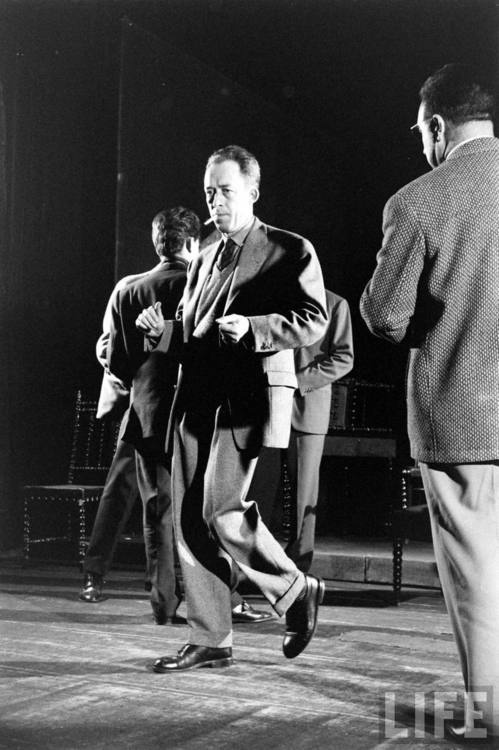 That suave gentleman above didn’t just like dancing. Albert Camus was a French Existentialist (but don’t tell him that, he hated the label) who famously wrote “The Stranger.” He also won a few trivial awards, like the Nobel Fucking Prize for Literature, a distinction his friend Sartre rejected.
That suave gentleman above didn’t just like dancing. Albert Camus was a French Existentialist (but don’t tell him that, he hated the label) who famously wrote “The Stranger.” He also won a few trivial awards, like the Nobel Fucking Prize for Literature, a distinction his friend Sartre rejected.
Before all of that, Camus was an avid soccer player until tuberculosis forced him to quit.
He played goalkeeper and claimed the position was easier on his shoes and he wouldn’t therefore incur the wrath of his grandmother, who would inspect his soles for wear and beat him if she didn’t like the results. “Everything I know about morality and the obligations of men,” he once said, “I owe to football.”
Throughout his life, Camus was known for a series of idiosyncrasies. He wrote standing up, had a cat named Cigarette, never locked his car, and tried yoga after falling into depression after winning the Nobel Prize.
But the strangest, it seems, occurred on his only visit to New York City. He enjoyed the Central Park Zoo so much that he visited it twenty god-damned times.
Life is meaningless, but those adorable penguins make it all worth it.
#5 Franz Kafka Loved Weird Porno and Paying for Sex
Franz Kafka is known for his dark existential works that mirror his neurotic personality. His novels are used extensively by philosophers like Gilles Deleuze and Felix Guattari for their exploration of power and punishment.
Aside from writing books like “The Metamorphosis” and “The Trial,” Kafka also wrote reviews of the sex worker’s whose services he procured long before the days of Yelp.
He once wrote of a prostitute that she was, “too old to still be melancholy, although she was hurt, if not surprised, that one is not so nice [lieb] to a whore as to a girl in an affair. Since she didn’t console me, I didn’t console her.”
Kafka also lost his virginity in 1903 to a shopgirl who moonlit as a sex worker. After that, he was a regular attendee of brothels while attending university.
When Kafka wasn’t paying for sex, he was wooing older women while on vacation in Switzerland.
But Kafka was extremely conflicted about his sexual escapades.
Sex both compelled and disgusted Kafka. He was attracted to it, because – well, because he wasn’t dead; but the physicality of the act disturbed him. He couldn’t stand bodily functions, yet the body itself had undeniably attractive qualities. It was a crisis he would never resolve, and his various relationships all brought their share of confused impulses, frustrated desires, and sexual dissatisfactions. This conflict would find its way into his writing, and one can easily identify erotically disturbed mumbles in nearly all his work.
Some have claimed that Kafka’s prolific sex life has been suppressed by scholars to make him seem like a martyr to his work. But one scholar, James Hawes, took on the serious academic task of excavating not only Kafka’s sex life, but his taste in porn.
A stash of explicit pornography to which Franz Kafka subscribed has emerged for the first time after being studiously ignored by scholars anxious to preserve the iconic writer’s saintly image.
Having stumbled by chance across copies in the British Library in London and the Bodleian in Oxford while doing unrelated research, James Hawes, the academic and Kafka expert, reveals some of this erotic material in Excavating Kafka, to be published this month. His book seeks to explode important myths surrounding the literary icon, a “quasi-saintly” image which hardly fits with the dark and shocking pictures contained in these banned journals.
If you thought porn in the age of the internet is fucked, well, Hawes says this about Kafka’s collection: “Some of it is quite dark, with animals committing fellatio and girl-on-girl action… It’s quite unpleasant.”

